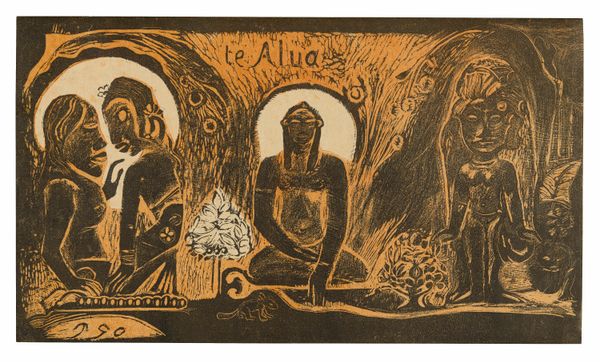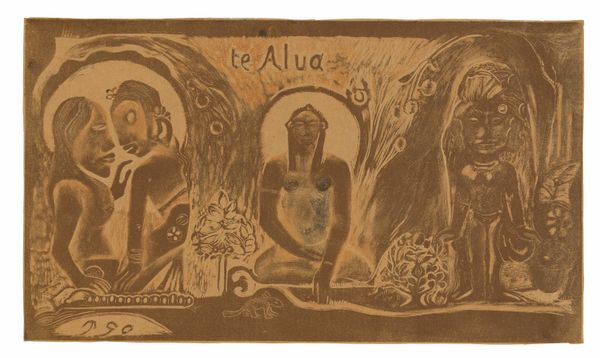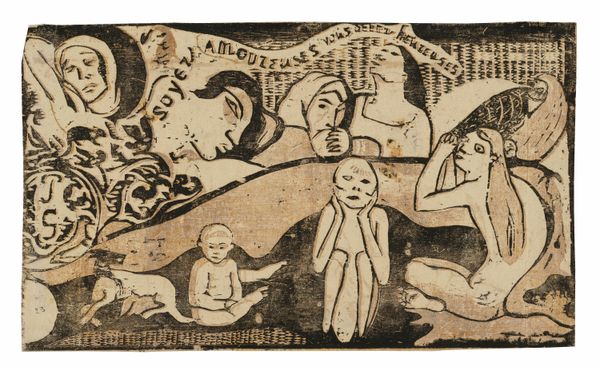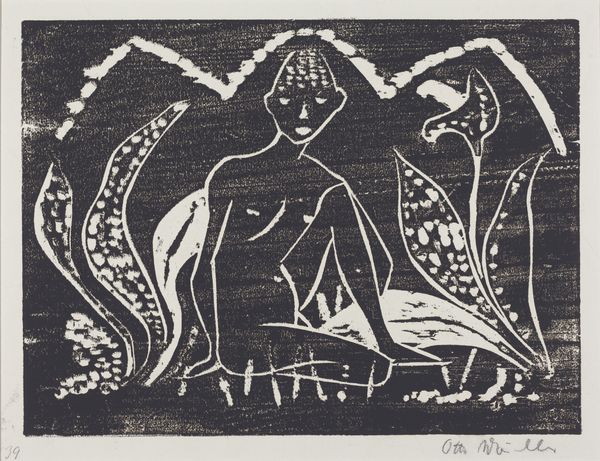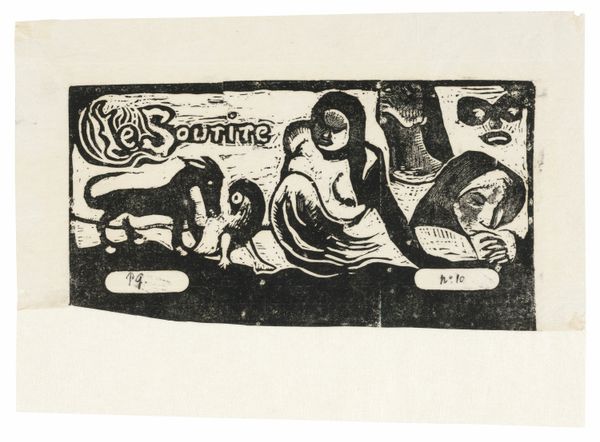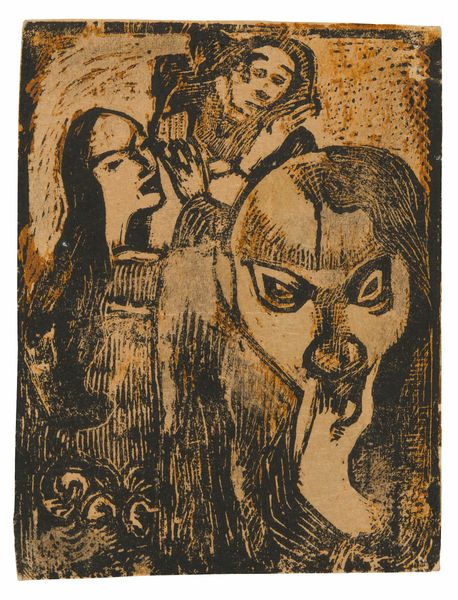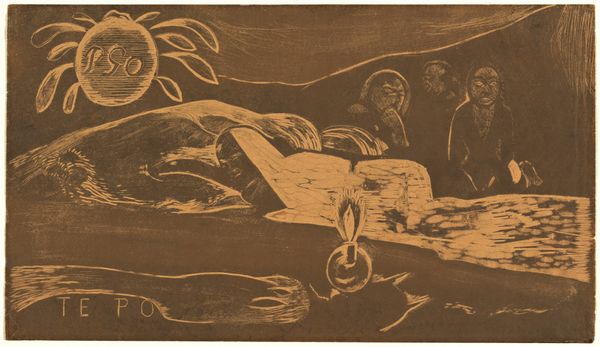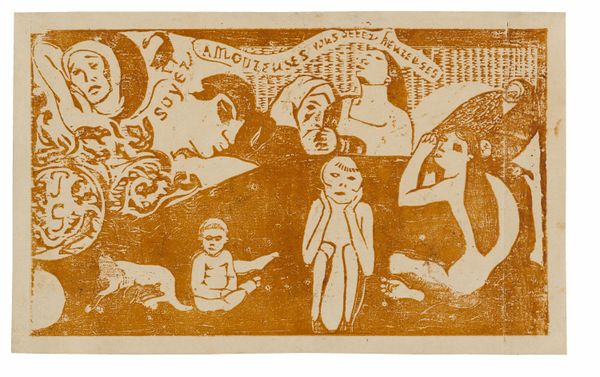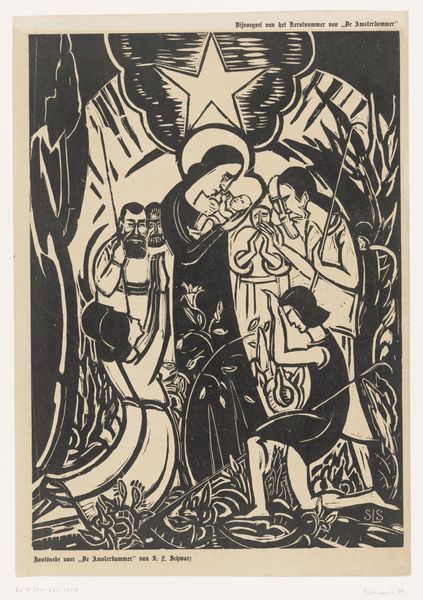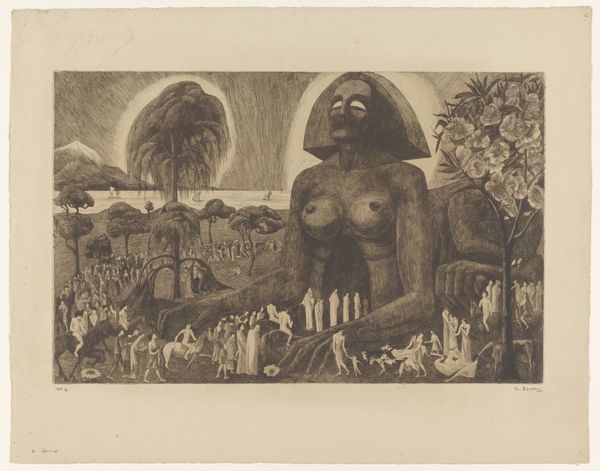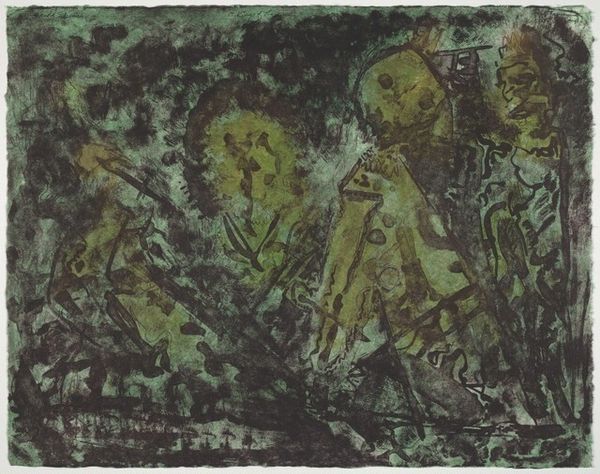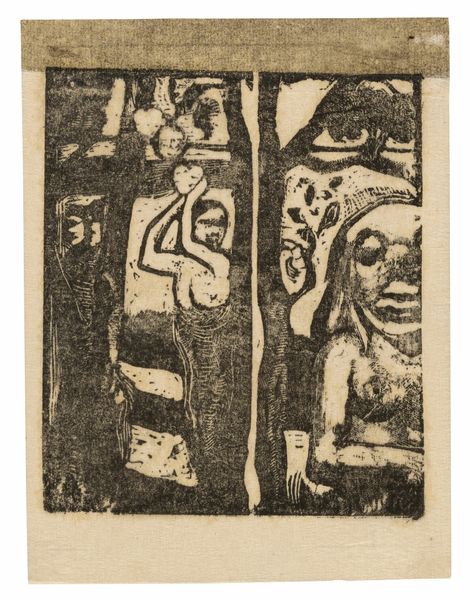
print, paper, woodcut
#
narrative-art
#
ink painting
# print
#
landscape
#
figuration
#
paper
#
woodcut
#
symbolism
Dimensions: 203 × 351 mm (image/sheet)
Copyright: Public Domain
Paul Gauguin made this woodcut, "Te atua (The God)" as part of his "Noa Noa Suite" while living in Tahiti in the 1890s. Gauguin, a white European man, sought to represent Tahitian spirituality, but his work is deeply entangled with colonialism and exoticism. Here, the figures are rendered with heavy outlines and a limited palette, creating a sense of the mystical. The composition is divided into three sections, each depicting different aspects of Tahitian religious beliefs. Yet, these images also betray the power dynamics inherent in Gauguin’s position as an outsider appropriating and interpreting a culture not his own. Gauguin once wrote about his desire to capture the "savage" and "primitive" elements of Tahitian life, revealing his romanticized and often inaccurate understanding of the culture. "Te atua (The God)" prompts us to consider the complexities of cultural exchange, representation, and the artist's role in shaping perceptions of identity and place. It serves as a reminder of the impact of colonialism on artistic expression, urging us to critically examine the narratives that art conveys.
Comments
No comments
Be the first to comment and join the conversation on the ultimate creative platform.
